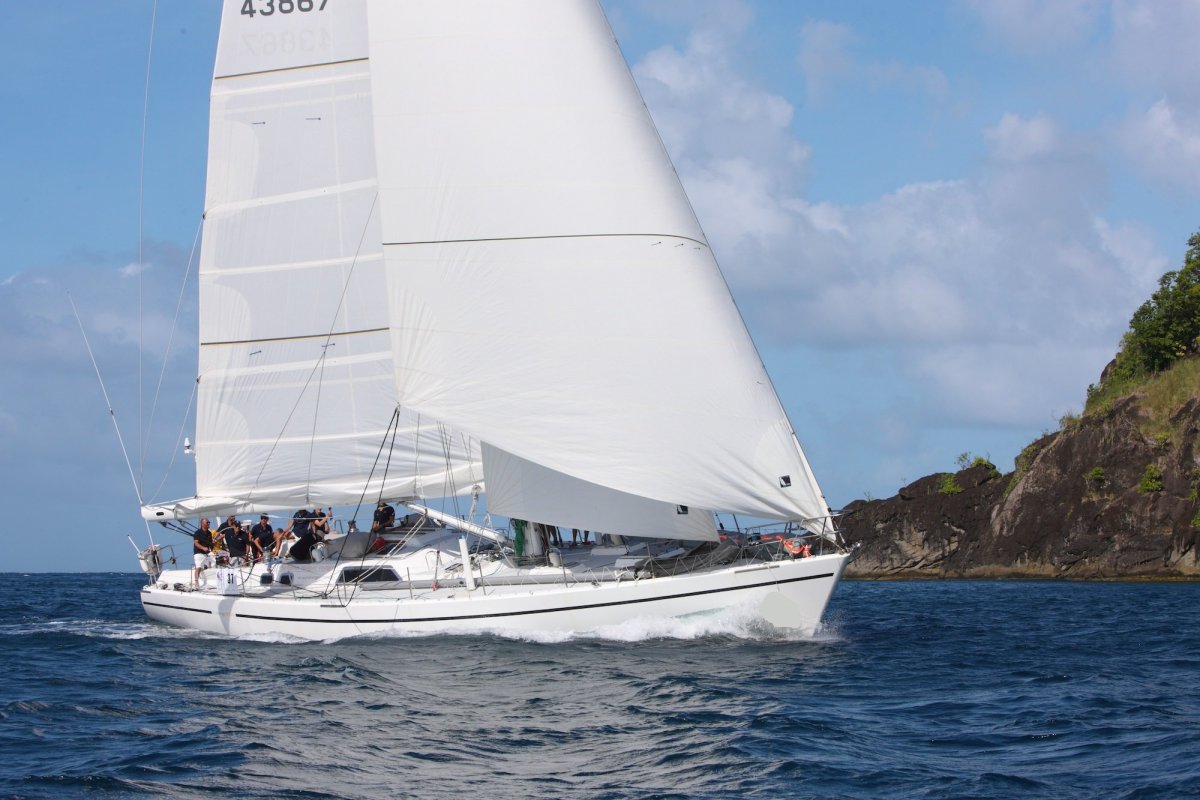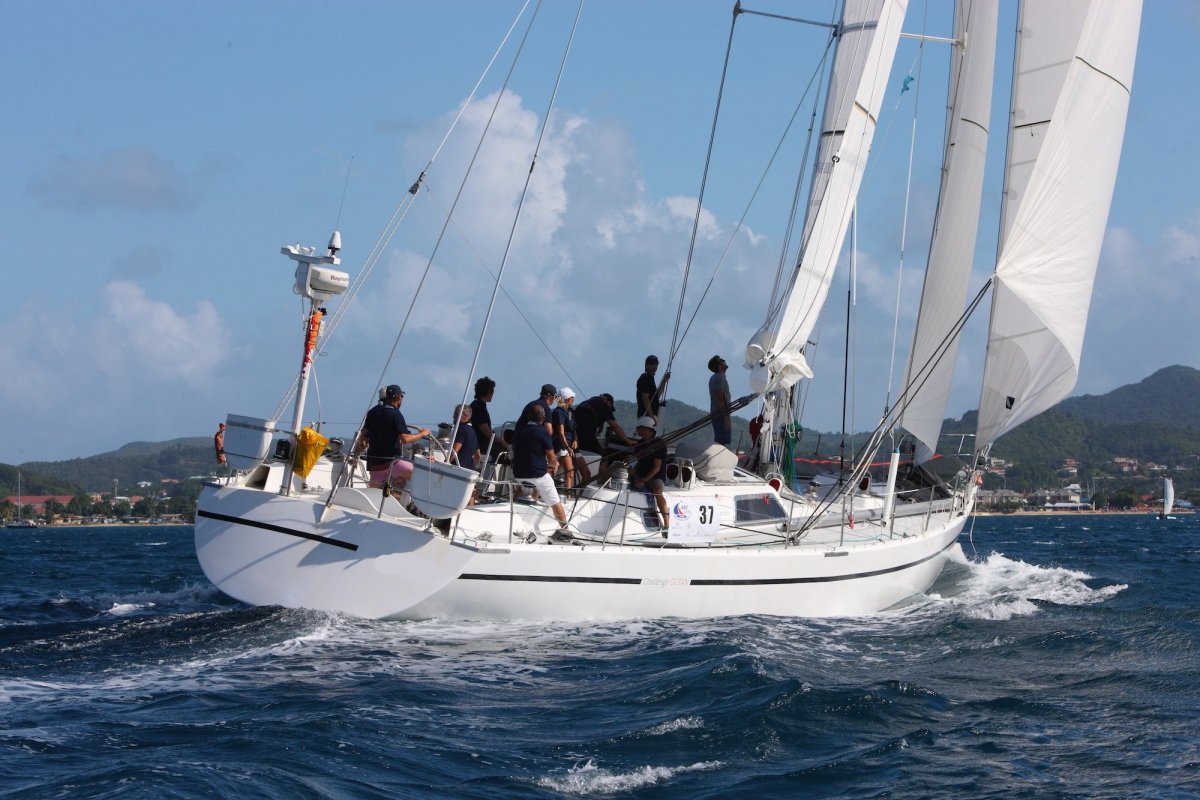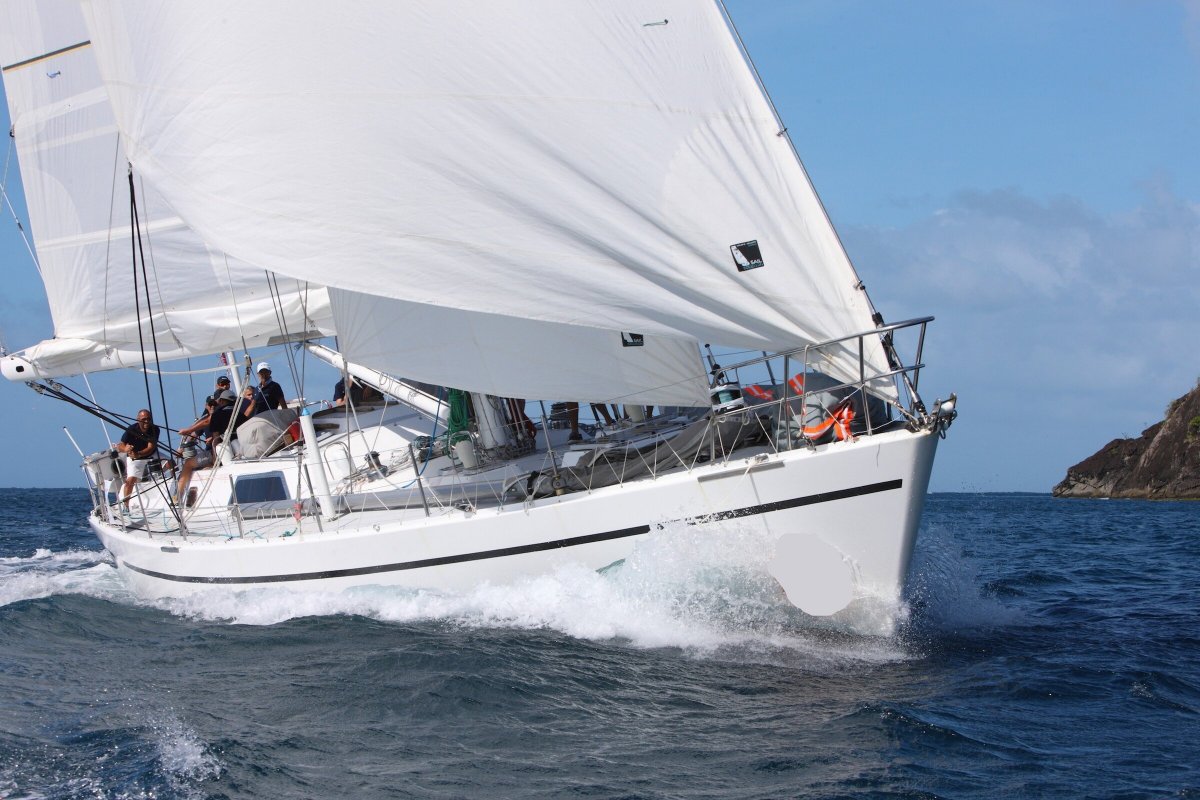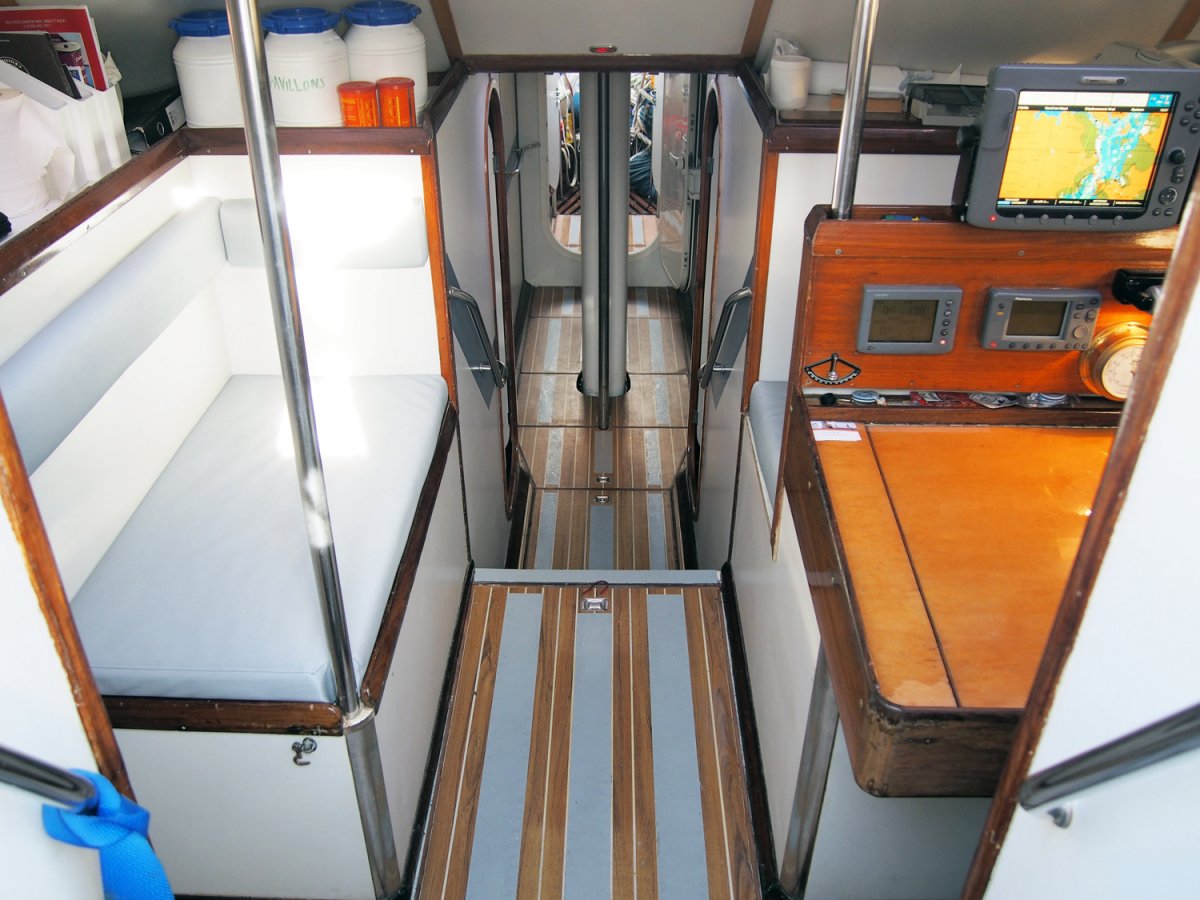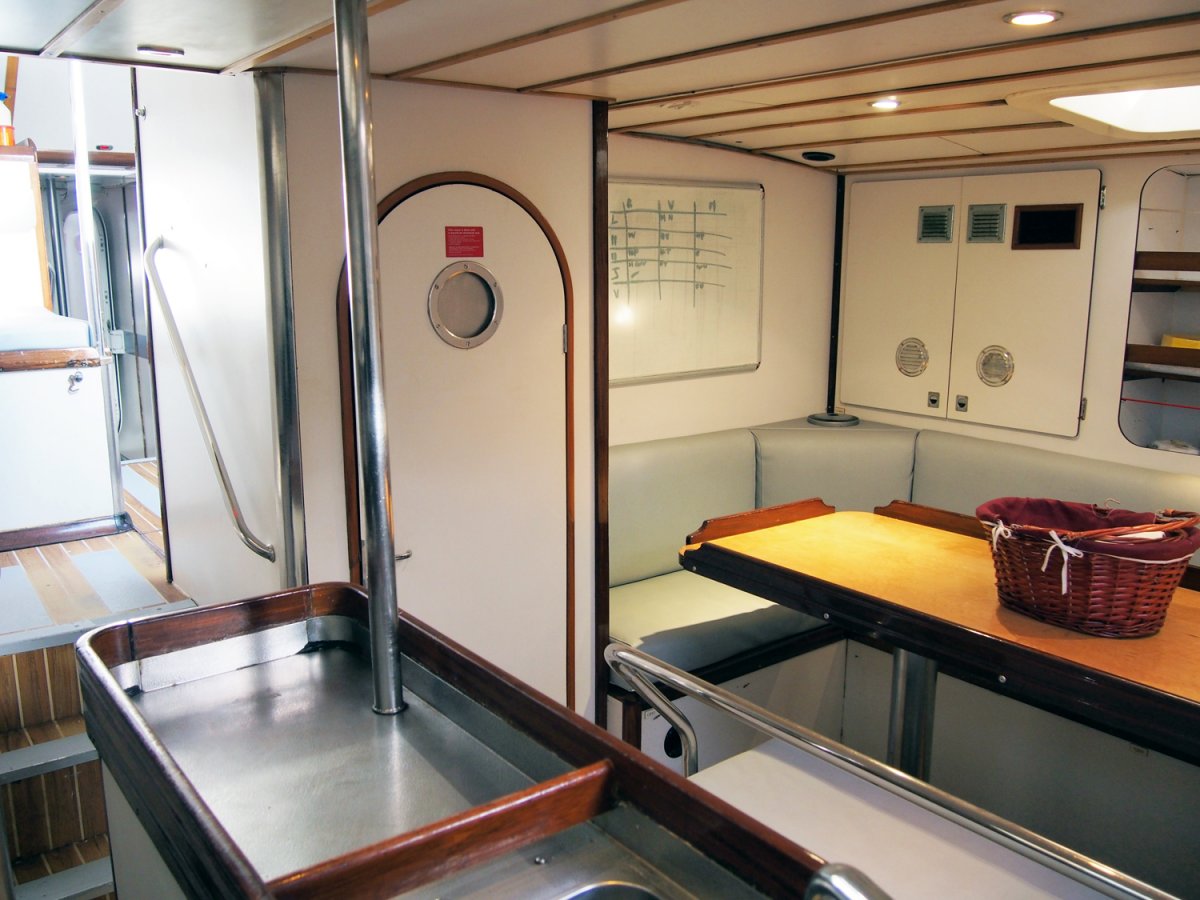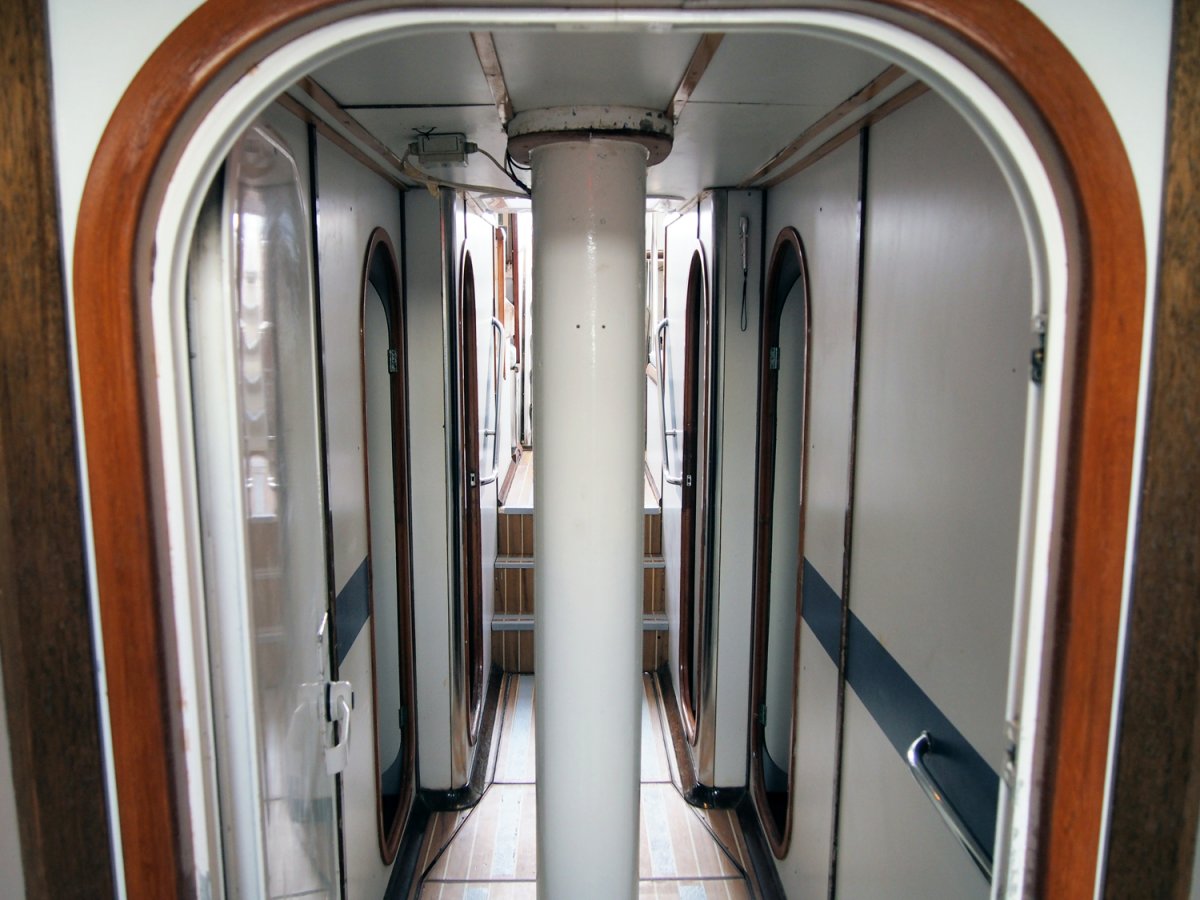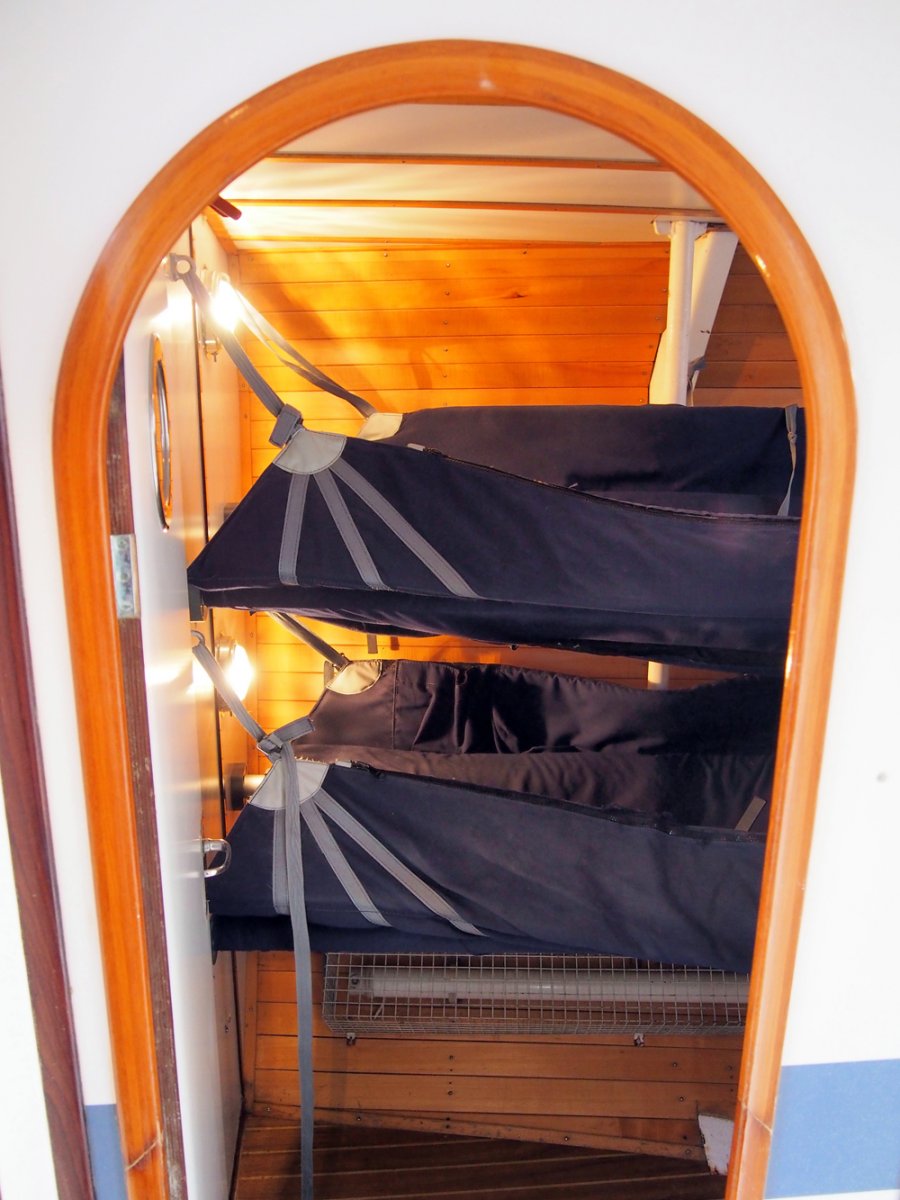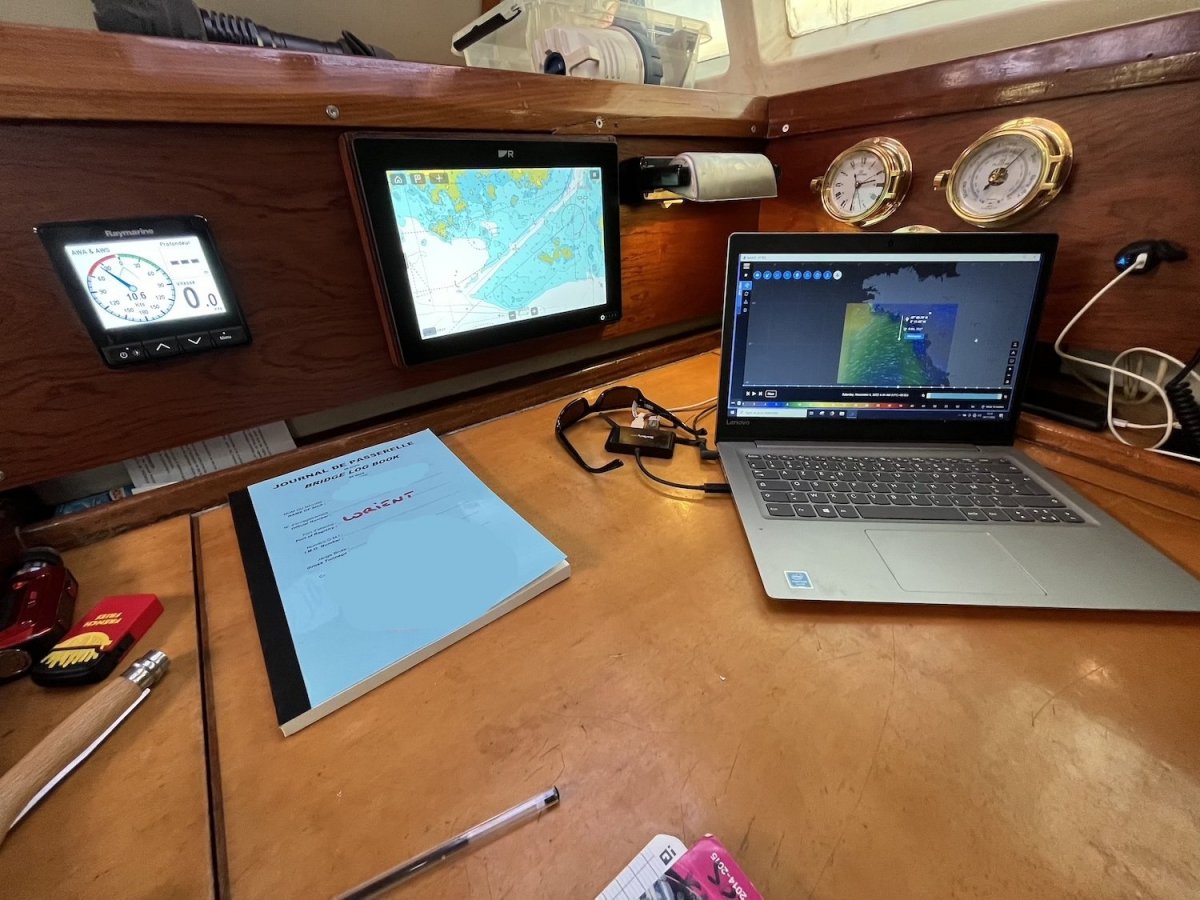Boarding is in New York in the United States. The first stage of this transatlantic journey from West to East will set sail for St. Pierre & Miquelon, a French archipelago at the end of the world. The length of the stopover will vary. Short if the window is good to reach Lorient, a little longer if a stand by is necessary to reach Brittany with better sailing conditions.
860 nautical miles separate New York from St. Pierre & Miquelon, on a direct route. We allow 6 to 7 days for this first stage but it may be faster, or slower, depending on the weather conditions encountered.
From St. Pierre & Miquelon to Lorient, 2150 nautical miles are to be covered by direct route, or around fifteen days of navigation. According to weather charts, a third of the course is upwind, half reaching, the rest downwind. Eastbound crossing, passing through Saint-Pierre et Miquelon and the Banks of Newfoundland, you’ll be sailing through the fog that is created by the thermal shock of the cold air coming down from the Labrador Current and the warm water of the Gulf Stream. The air will become denser, the sail changes more frequent and the sea more hostile, but fortunately downwind. After that, you’ll be gliding along on the W’ly swell, which will lengthen and push you towards the Irish coast, before descending towards France.” The crew will have to make the boat work!
We propose you to be part of the crew of a Challenge 67 where everyone participates 100% running the yacht. This 21m monohull was built for the BT Global Challenge, crewed round-the-world race against prevailing winds. Our ships deliberately do not use pilots or furlers – it is not in their DNA – because of sails changes. It is, in fact, one of the best ways to discover and learn offshore navigation. Rigged as a cutter, the wardrobe includes staysail, Yankee 1/2/3, large genoa, asymmetrical spinnaker and full batten mainsail.
Supervised by 2 professional sailors, Captain 200 Sailing and Youth & Sports graduates, the crew lives to the rhythm of navigation shifts, but also stewardship shifts, cooking, washing up, etc. This 24/7 offshore navigation is a transatlantic and not a cruise. You will eventually have to endure bad weather, heat, sometimes cold, rain, sun! You must therefore be psychologically ready to participate in an Atlantic crossing.
Read more
